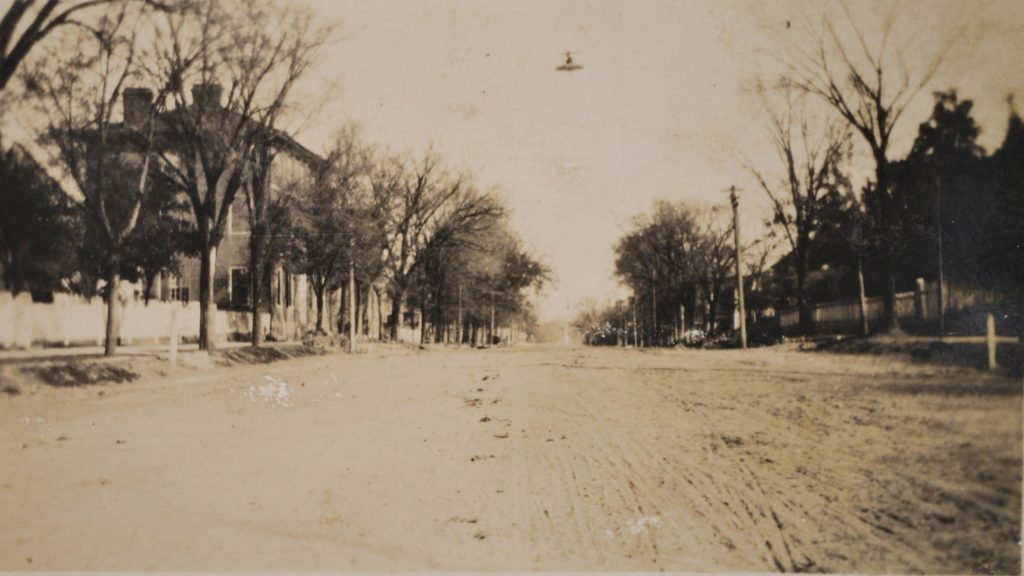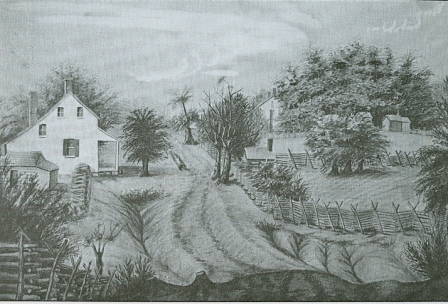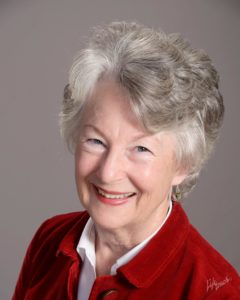Forgotten outside the small South Carolina town of Winnsboro where she lived most of her adult life, Catharine Ladd now emerges from the painstaking and extensive research of Patricia Veasey to shine as a vibrant, dedicated, innovative educator and writer whose work spanned nearly the entire 19th century. Thank you, Mrs. Veasey, for rediscovering this delightful lady who belongs alongside fellow 19th century contemporaries Mary Chestnut, Emma Holmes, Celia Thaxter, Ellen Allerton, Louisa May Alcott, Emily Dickinson, and Phoebe Levy Pember.
Marsha Hanna, educator, Charlotte-Mecklenburg schools, North Carolina; education director, Carolinas Aviation Museum, Charlotte; consultant for Newsweek Education Program.
How did I get interested in the lives of Catharine Stratton and George W. L. Ladd and write her biography, A Relentless Spirit, Catharine Ladd: Southern Educator, Entrepreneur, and Author, 1808-1899?
It all began in 1990, when I was hired by Wade B. Fairey, the Ex. Director at Historic Brattonsville, to plan education programs at the site. Wade knew about Catharine Ladd whom Dr. John Bratton employed in 1839 to begin a female academy on his plantation. Read about her academy and see her students’ art here. CHM of York County
Her husband George Ladd, an itinerant portrait artist, their two male toddlers, Catharine’s mother Ann Stratton, and two enslaved women made up the Ladd household. They lived and taught school in the remodeled Colonel Bratton log home across the road from Dr. Bratton’s Federal-style plantation house. The Ladds lived with the Brattons several years before moving to Fairfield County, South Carolina where they resided the rest of their lives, teaching school, painting portraits, and raising six children. However, soon I discovered a much more complex story.

Old Cathcart House (Lt): Previously the Female Seminary of Catharine S. Ladd. Image courtesy of the Van Center Collection, ca. 1910
From the onset the question was whether to attempt a biography of a person with few primary sources for documenting her life. Her circumstances of loss were known. In February 1865, at the end of the war, Catharine Ladd’s house in Winnsboro, South Carolina, burned at the hands of Union troops under Brigadier General Slocum. The previous year she was widowed, and now had no place for her family to live. She had six children: two daughters at home, one daughter in Florida staying with friends and recovering from illness, and three sons away at war. Her writings of over thirty years were gone, as were all paper documents of financial records, academy business, teaching materials, books, letters, and whatever possessions she and her husband George accumulated over a lifetime. As was the case throughout the South, evidence of her past life was gone. Nonetheless, family oral history about George and Catharine Ladd fascinated me and prompted me to know their story, especially that of Catharine before the war. I was not discouraged. It was an extended research journey of two decades.
Naturally there were mysteries that remained unanswered. The created Ladd family story included “myths” about Catharine’s Richmond childhood as a playmate of Edgar A. Poe; where Catharine and George located and when; how they connected with patrons; and her activities during the Civil War, like her creation of the Confederate flag. The discovery of the truth was much more compelling than fiction, and the stories are all addressed in the book.
Catharine Stratton’s maternal genealogy was uncovered accidentally while searching the craftsmen files at the Museum of Early Southern Decorative Arts in Winston-Salem, North Carolina. Her grandmother was married three times, the first marriage to an unknown man who was the father of Ann Collins, Catharine’s mother. Ann Collins grew up in a large family of stepbrothers and sisters of her own mother’s second and third marriages. The death of Catharine’s father by drowning was a family story, but undocumented. She may have had a brother. There are no details about how Virginian Catharine Stratton and New Englander George Ladd met in Richmond, Virginia and married. Catharine’s widowed mother, Ann Collins Stratton, lived with George and Catharine until her death in Winnsboro in 1856. Yet strangely, there are no stories, incidents, or any information about Ann Stratton save an obituary and her burial. The only mention of her was in a letter by son A. W. Ladd about his father George Ladd’s death, stating that, “His resting place is side by side with grandmother, in the old Methodist church yard [Winnsboro, South Carolina].”

B&W painting of the Brattonsville village by Martha Bratton, ca. 1840
Catharine and George married around 1827 in Richmond, Virginia, travelling throughout the southeast where George sought patrons as an itinerant portrait artist and Catharine taught in and established several female academies from Charleston, South Carolina to Rolesville, North Carolina; to Macon, Georgia; to Brattonsville, York County, South Carolina; and finally to Fairfield County, South Carolina. Her academies educated and influenced hundreds of young women before the Civil War. Catharine was a published author of poetry, prose, and drama in national magazines and a journalist in local newspapers. During the 1830s Catharine and George were separated for long periods of time pursuing patrons, a fact which caused heartache described in Catharine’s early poetry. On the web page for the Boston Public Library you can read one of her love poems, a critique of that poem, and listen to an oral recording of it here. Boston Literary History
The body of known portraits by George Ladd are from Fairfield County, although undoubtedly there are others yet definitively identified as his work. An article by Patricia Veasey in the Journal of Early Southern Decorative Arts discusses George Ladd as a portrait artist and his ten known portraits. Read it here Mesda Journal.
George had other occupations, notably as an instructor and administrator in Catharine’s academies; as a court assistant in suing on others’ behalf; as a store clerk; and as a buyer-seller of real estate in Fairfield County. Catharine was a competent social organizer, entrepreneur, and fund raiser, especially in Winnsboro. How they navigated a partnership and created a middle-class family life in the South, while both worked outside the home, was worth considering and led to discoveries how Southern families lived.
RELATED LINKS ON R&R.COM: Col. Wm. Bratton Cabin, at Home in Winnsboro, and the Feasterville Community
To order your copy of A Relentless Spirit by Pat Veasey, contact the Museum of York County, 803-329-2121 and ask for Mark Cockerille.
R&R Contributing Author – Biography: Patricia Veasey is an independent scholar with an interest in women’s education in the antebellum South. She presented papers and published articles about that topic throughout the southeast, including the Museum of Early Southern Decorative Arts, the Charleston Museum, the Southern Association of Women Historians, the American Living History and Agricultural Museums, and in publications like the Journal of Early Southern Decorative Arts and The Antique Sampler and Needlework Quarterly. Pat

Mrs. Pat Veasey – Author and Educator
received a Madelyn Moeller Fellowship from the Museum of Early Southern Decorative Arts. In 2014 she was honored as a Keeper of the Culture by the Culture and Heritage Museums. In 2018 Pat published an article on itinerant portrait artist, George Williamson L. Ladd for the Journal of Early Southern Decorative Arts: Mesda Journal Article Her biography of Catharine Stratton Ladd was the result of two decades of research, lecturing, and writing.
Pat with her husband Ed live near Clover, South Carolina. Ed enjoys gardening, and they like being in state and national parks where they hike, bird watch, and bicycle.

Share Your Comments & Feedback: